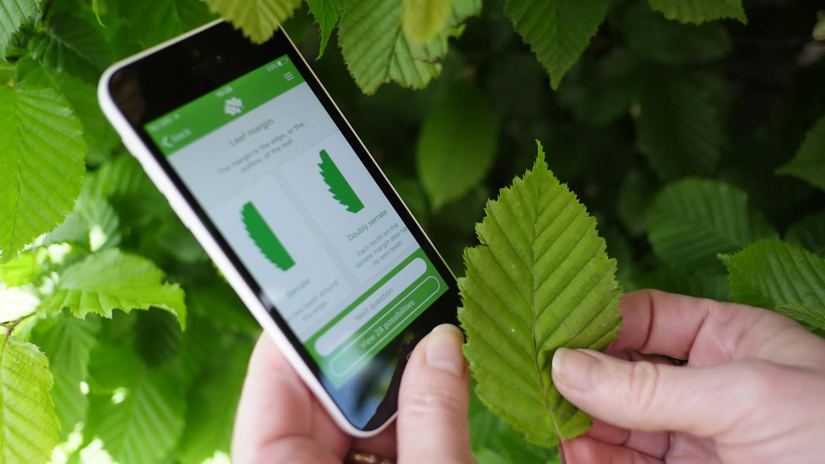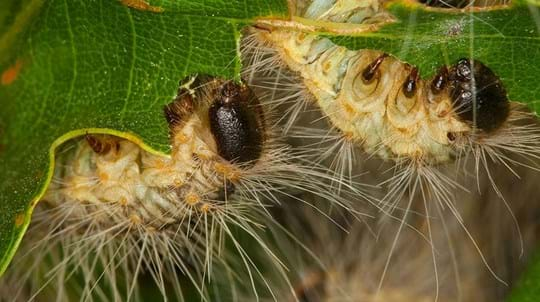
Credit: FLPA / Alamy Stock Photo
Leaves
Dark green and variable in shape – some lobes are elaborate and pointed while other leaves have rounded, simple lobes. To touch they are rough and thick, shiny above but felted underneath.
A pretender to the throne, the Turkey oak was introduced to the UK in the 1700s and is now impacting our native oak populations. It’s less valuable to wildlife, but much faster growing and a host of the knopper oak gall wasp.
Common name: Turkey oak, Austrian oak
Scientific name: Quercus cerris
Family: Fagaceae
Origin: non-native
Turkey oak is a deciduous broadleaf tree which can grow to 30m. It was introduced to the UK as an ornamental tree in the 18th century. The bark is dark grey, maturing with various plates and deep fissures. On older trees, the trunk fissures are often streaked with orange near the base.
Look out for: the leaf lobes which are deeply cut with short points at the tips.
Identified in winter by: buds in clusters and the bud scales which extend beyond the bud. Each bud has more than three scales.

Credit: FLPA / Alamy Stock Photo
Dark green and variable in shape – some lobes are elaborate and pointed while other leaves have rounded, simple lobes. To touch they are rough and thick, shiny above but felted underneath.

Credit: Zoonar Gmbh / Alamy Stock Photo
The flowers appear on dangly catkins between April and May and are pollinated by wind.

Credit: Clare Topping / WTML
The large acorns mature 18 months after pollination. Acorns are quite distinct – orange at the base, graduating to a green-brown tip, and with a 'hairy' acorn 'cup', which looks like a hat made of moss.
Other oak species. It can be distinguished from native oaks by its 'hairy' acorn cups, which look like they are covered in a dense coating of moss.

Download our free Tree ID app for Android and iPhone to identify the UK's native and non-native trees. It's an A-Z tree guide in your pocket.
Download the appTurkey oak is host to the gall wasp Andricus quercuscalicis, whose larvae damage the acorns of native British oaks. In 1998, the Ministry of Defence ordered the felling of all Turkey oaks on its UK bases.
Native to south-east Europe and Asia Minor, from France across to the Balkans and Turkey, Turkey oak is widely planted in much of Europe and was introduced to UK woodlands in the 18th century.
You'll see it planted in parks and gardens and along roadsides in the UK. It can set seed and so has become naturalised in the UK. You may find it growing close to our native English oak and sessile oak.
Turkey oak is not as valuable to native wildlife as English and sessile oaks, but the catkins provide a source of pollen for bees and other insects, and the acorns are eaten by birds and small mammals (although they are said to be less palatable than native oak acorns). Birds may nest and roost among the branches.
Turkey oak is mainly used as an ornamental tree, though it is less widely planted now, due to the damage its gall wasp can cause to native oak acorns.
Its timber has a fairly poor reputation, especially for use outdoors as it doesn’t weather well. However, it can be used indoors where it may crack and warp, but historically it was made into wainscoting (wood panelling). If well-seasoned it can be used for firewood.

Shop
We have single trees and tree packs to meet your needs, from wildlife to woodfuel. Delivery is free.
External link

Trees woods and wildlife
Learn more about the pests and diseases threatening our trees. Find out how to spot them, the symptoms and outlook, and how you can help.